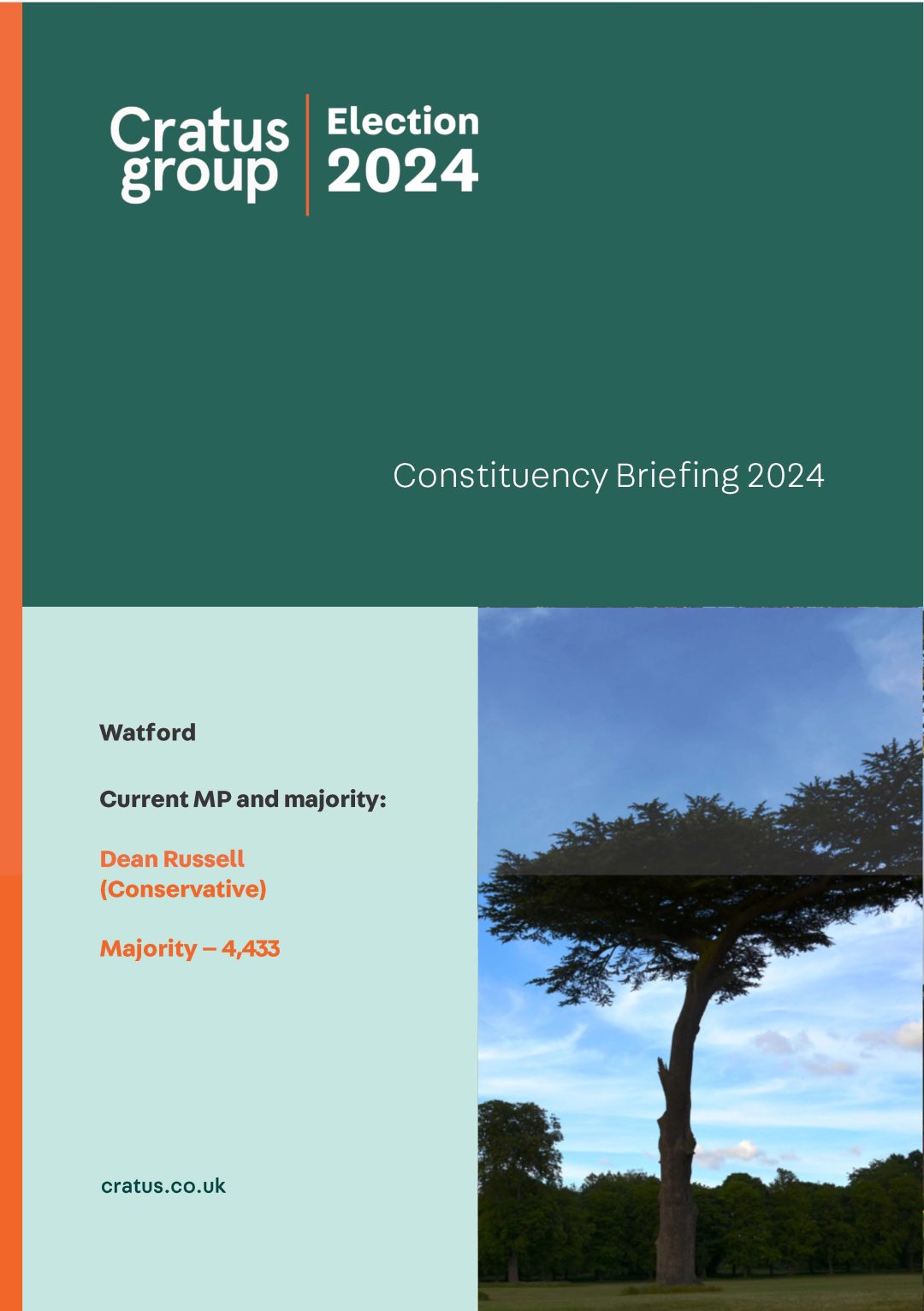White Paper Reflections
By Dan Humphreys, Associate Director
“Is that it?” asked the Shadow Secretary of State, responding to the introduction of the Levelling Up White Paper on Wednesday afternoon. Judging by many responses, she wasn’t only one asking that question. After months of anticipation the White Paper has landed and ‘underwhelmed’ seems to be the common consensus.
Is it a fair reaction? The fact is that much of what was announced was not new, and there is much evidence of existing policies, outside the remit of DLUHC, being included to pad out the White Paper. On the other side of the ledger, there are definitely things in this paper to welcome, and some long-term implications for local government if Michael Gove can deliver on what is in here.
The underlying challenge has been repeatedly summarised by Gove as the country being like a ‘jet plane with only one engine firing’. It’s obviously true that, in the UK, productivity and GVA per person are far higher in London and (most of) the South East than in the other regions of the country, and that this is a problem to be tackled. We should welcome the renewed attempts to confront and solve this issue. There is much in the White Paper to be commended as steps in the right direction.
The forces that transformed Florence during the Renaissance, the Medici effect, are heavily referenced as the solution to narrowing the disparities between the top and worst performing areas. This is the idea that successful cities have been successful due to the agglomeration effects of bringing many talented people together.
That’s a good and well-evidenced analysis with regard to London. It is the agglomeration effect of being the centre of government, finance, R&D (the golden triangle of Oxford-Cambridge-London), and other sectors that gives the capital so many advantages.
The White Paper reiterates and introduces moves that are being made to redress that imbalance.
One of the more interesting moves that is referenced in the summary is the increase in R&D spending in regions other than London and the South East, and in particular the “learning from the MIT-Greater Boston and Stanford-Silicon Valley models”. If there is an ambition to recreate a Stanford or MIT in the West Midlands, Manchester, or Glasgow, that would be an exciting move towards creating an anchor institution that could create some of the agglomeration effects which already benefit cities like London. Unfortunately, the White Paper doesn’t mention either Stanford or MIT again. It’s just a throwaway line in the Executive Summary, with a mere three paragraphs out of 332 pages referencing ‘Innovation Accelerators’ in the rest of the document. The intent to invest £100m in them over the next four years is welcome, but with no clear intent, that £25-30m a year spread over three city regions will quickly be gobbled up.
The next obvious lever for taking the agglomeration benefits of London and spreading them to other areas is the relocation of central government bodies. This is covered in the document, and plans to further move the civil service out of London into Wolverhampton, Birmingham, Stoke-on-Trent, Glasgow, Wrexham, etc are detailed. There is a risk that spread so widely across numerous towns and cities, this well-intentioned work will have little impact in creating significant anchors, and it is clear that the main bulk of the civil service and the government machine will still be rooted in Westminster and Whitehall.
The ambitions to extend gigabit to the whole country should be given the ‘rocket booster treatment’. They are vital to productivity growth, and it is well proven that the implementation of ultrafast broadband infrastructure raises economic performance. Set in the context of reducing regional inequalities though, there is little supporting evidence to suggest that it will be any sort of gamechanger rather than a necessary enabler of other activities. Spain and Portugal are just two of the countries that were well ahead of the UK in rolling out gigabit broadband, but it has done nothing to reduce the dominance of Madrid and Lisbon respectively. Both countries still have high levels of regional inequality.
With regard to the effect on councils (of any tier of regional government), there is plenty in here that gives us some understanding of what is in store for councils, and the contradictions will not make welcome reading for many council leaders, particularly those in district and borough councils.
There is a clear headline within the summary stating that there ‘Will be a Huge Shift of Power from Whitehall to Local Leaders’ and an explicit “recognition that disparities are hyperlocal”. This last point is critical in understanding where economic inequality lies in the UK. While there certainly are huge imbalances in average earnings across the country, when the data is broken down, those in the lower quartile of earnings receive a similar income across the whole country. When cost of living is input, the data shows that those on low incomes in London and the South East are also in desperate need of levelling up.
From there though, the contradictions kick in and it’s clear that with regard to councils this is emphatically not a devolutionary project. The White Paper identifies historic shortcomings with a “lack of
- longevity and policy sufficiency;
- policy and delivery coordination;
- local empowerment;
- evidence, monitoring and evaluation;
- transparency and accountability.”
There is an argument to be made for each of these shortcomings, but in trying to find an integrated solution to all five, the paper ties itself in knots and eventually comes down on the side of more centralisation of decision making.
It is announced that there will be a “new independent body created to improve transparency of local government performance”. This sounds like a recreation of the Audit Commission which existed prior to 2010. Such a body can only audit council performance if it also has a selection of common measures with which to benchmark council performance. This is not devolutionary.
A key part of the ‘system change’ is a commitment that “all policy across Whitehall (will be) aligned with the levelling up agenda and subject to spatial analysis…”. This is not unworthy, but again will be seen as a sign that policymaking and evaluation will remain rooted in Whitehall.
There will be 12 national missions (some of which are mentioned above) and while this is not controversial in and of itself, it is a further sign that, while decisions may vary and cater for local differences, this is a ‘national’ project.
There is a proposal that the local government pension scheme (singular) is instructed to invest in local projects. The local government pension scheme is currently a collection of local government pension schemes (plural) administered by boards consisting of representatives from the employers (elected councillors) and employees (trade unions reps) in areas typically defined by the ‘upper-tier’ authority areas. These boards issue strategy statements to govern how the money is invested, with the primary aim being to maximise returns for past, current, and future local government employees’ pension payments. Instructions from the centre on how this is to be spent are not devolutionary.
The rounds of bidding to gain permission from central government to regenerate small portions of high streets (for example) are set to continue with no obvious shift to allow or enable democratically elected councillors to take these decisions.
The 55 education investment areas are a mechanism to centralise powers that were previously held by local education authorities. It may or may not be the correct thing to do to improve educational outcomes, but it is not devolutionary.
The framework for the county deals that are being pursued, initially in nine areas, is manna from heaven for proponents of county-wide unitary authorities. Much is given over to the perception that the system of local government is currently ‘fragmented’. While the White Paper says that district councils will be encouraged to play a role in the county, it is clear that the deals will be between county and/or unitary councils and the government and that, unlike the past rounds of deals, the involvement of district councils will not be a requirement.
One glimmer of hope for district councils came when the Secretary of State reconfirmed that the Shared Prosperity Fund would be administered through lower-tier authorities. However, in reply to Clive Betts MP, the Chairman of the DLUHC select committee, this was the only example he could give of an increase in powers or resources being given to councils.
All in all, this is a White Paper that makes and reiterates a number of commitments that will make a difference in some areas. But there’s nothing in here that is genuinely new, nor has the necessary detail or clout to deliver the scale of change that is necessary. Furthermore, for anyone who believes that devolution to local councils should part of the solution, this sets the government off in the opposite direction. If anything, it’s more centralisation rather than devolution.







